Last Updated on September 25, 2025
To run a successful business, you need to go beyond intuition and listen to your customers. Customer-centric brands experience higher revenue growth than their competitors because they strategically incorporate customer feedback and Voice of the Customer (VoC) into their culture.
Voice of the Customer helps you understand what customers think, feel, and expect from your business. It not only helps increase sales but also build stronger relationships and stay ahead of the competition.
However, many businesses struggle to move from simply collecting feedback to systematically analyzing and implementing it. This is where a formal Voice of the Customer program is essential.
In this guide, we’ll walk you through the Voice of the Customer program, its benefits, the best methods for collecting data, a step-by-step implementation plan, and the best VoC tools to execute your strategy.
What Is a Voice of the Customer (VoC) Program?
Voice of the Customer (VoC) is a research method that collects and analyzes customer feedback from different sources to get deep insights into customers’ experiences, needs, and expectations. VoC involves more than standardized customer feedback, including direct channels (such as surveys), indirect channels (such as social media), and implicit feedback (such as user behavior).
A Voice of the Customer program is a formal, strategic process that a business implements to strategically employ customer feedback. It’s a recurring cycle that includes:
- Considering customer feedback at all touchpoints.
- Analyzing data to identify trends, sentiment, and pain points.
- Sharing customer insights with relevant teams to drive improvements.
- Communicating to customers that their feedback has been heard and acted upon.
A sophisticated Voice of the Customer program is the one that turns customer feedback from a simple metric into a guiding resource for the entire business.
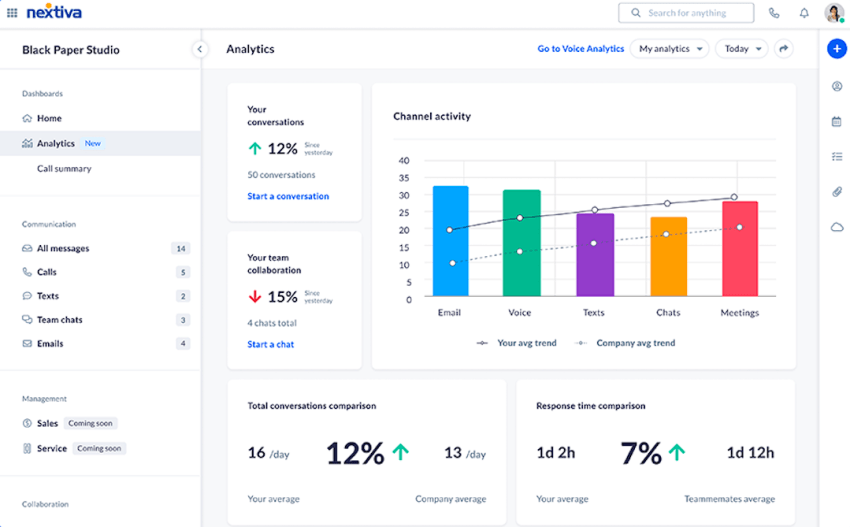
Key Benefits of a Voice of the Customer Program
Implementing a formal Voice of the Customer program offers many business benefits that directly impact your bottom line:
Reduce customer churn
Systematic feedback allows you to identify common pain points and friction points in the customer journey. A Voice of the Customer program helps proactively address these issues, whether it’s a confusing checkout process or a faulty feature, before they cause frustration and send customers to the competition, reducing customer churn.
Increase customer loyalty and trust
When customers feel that you not only listen to their feedback but also act on it, it shows that you value their input. This builds a strong emotional connection and trust in your brand. A customer who feels heard is more likely to remain loyal, which is key to building long-term customer loyalty.
Find new revenue opportunities
Your customers’ feedback can reveal unmet needs, which can directly inspire new product features, service offerings, or entirely new revenue streams. Listening to the Voice of the Customer enables you to build what people actually want, create a better product-market fit, and identify clear upselling opportunities.
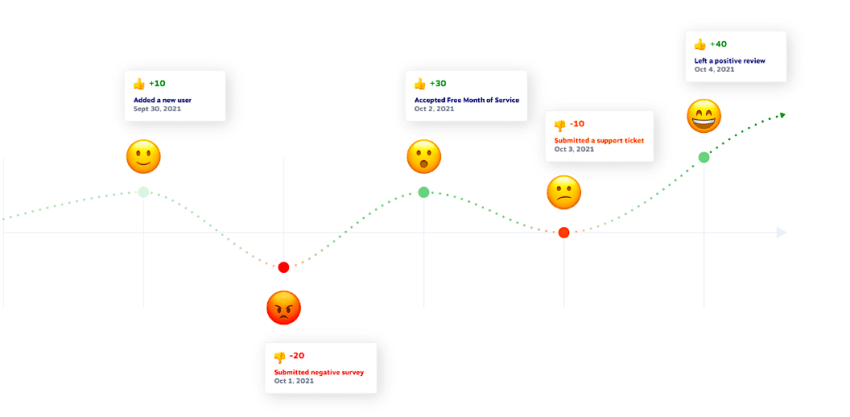
The Best Methods for Capturing Voice of the Customer Data
Businesses use various methods for customer feedback, and each one offers different insights. The following approaches work best:
Surveys and polls
Short, targeted customer surveys give customers a direct way to share their thoughts. Tools like Net Promoter Score (NPS), Customer Satisfaction (CSAT), and Customer Effort Score (CES) measure loyalty, satisfaction, and effort. Post-purchase surveys show pain points that customers experience during the buying process. They also help teams benchmark performance to improve product development and customer strategy.
Example: An online retailer can ask buyers why they abandoned a shopping cart, then fix the friction points that hurt conversions.
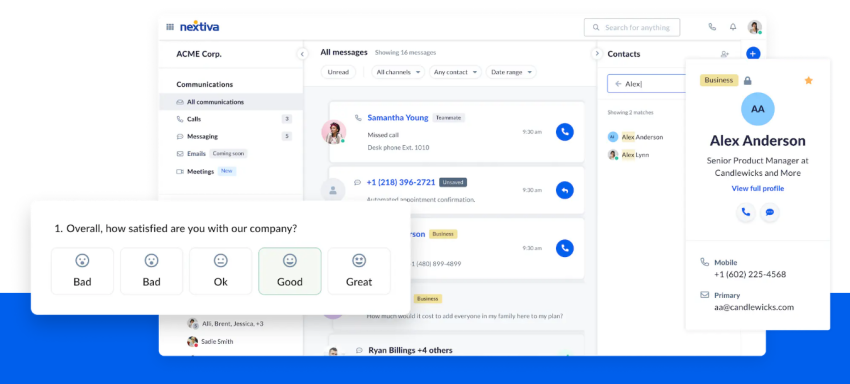
Customer support interactions
Support conversations show feedback and customer concerns in the customer’s own words. Call recordings, chat transcripts, and agent notes from your contact center document real issues as they happen. By applying sentiment analysis, speech analytics, and text analytics, teams track recurring problems and shifts in sentiment. These insights are useful for optimizing customer interactions and improving overall customer relationship management.
Example: A software company can analyze chat transcripts to find features that confuse users and then simplify instructions.

Social media listening
Customers share opinions freely on social media platforms like X (Twitter), Instagram, and LinkedIn. Monitoring brand mentions, industry keywords, and competitor conversations allows businesses to track praise, criticism, and trends in real time. Social listening is a powerful way to gather feedback, understand customer preferences, and integrate Voice of the Customer into broader customer strategy initiatives.
Example: A restaurant can see which menu items get the most positive mentions and adjust promotions accordingly.
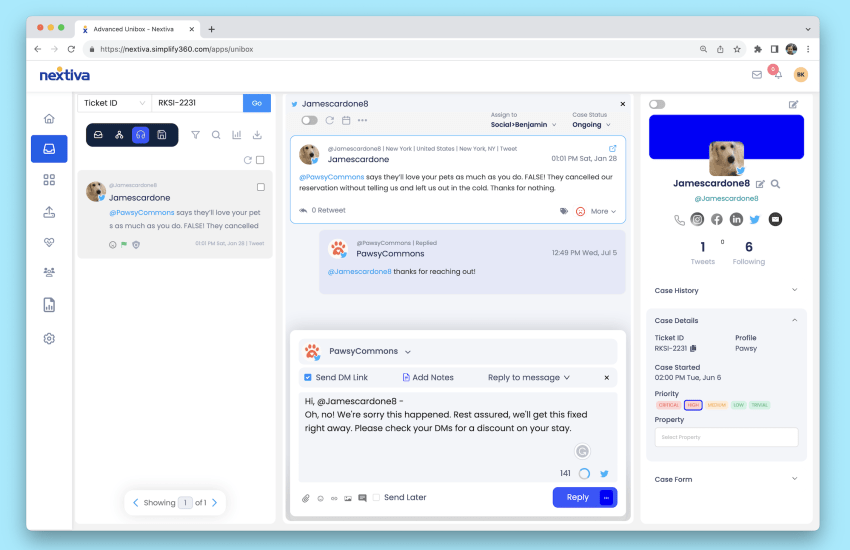
Online reviews and ratings
Online review sites like G2, Yelp, Google, and Amazon influence many buying decisions. Collecting and analyzing this feedback gives businesses an unfiltered view of what customers value and where they feel disappointed. It also provides insights into new customer expectations, so businesses can close the loop and maintain strong customer retention.
Example: A SaaS company can read negative reviews to identify confusing features, then update tutorials or improve onboarding.

Website behavior and chatbots
Customers leave feedback through their actions and their words. Tracking how they move through a site, what they search for, and the questions they ask chatbots can uncover pain points. Real-time feedback from digital channels allows service teams to optimize the customer journey and improve customer satisfaction scores. Using VoC platforms, teams can integrate behavioral data with surveys and support feedback to form a deeper understanding of customer needs.
Example: An e-commerce site can notice many users searching for “return policy” and make that information more prominent, reducing calls to support.
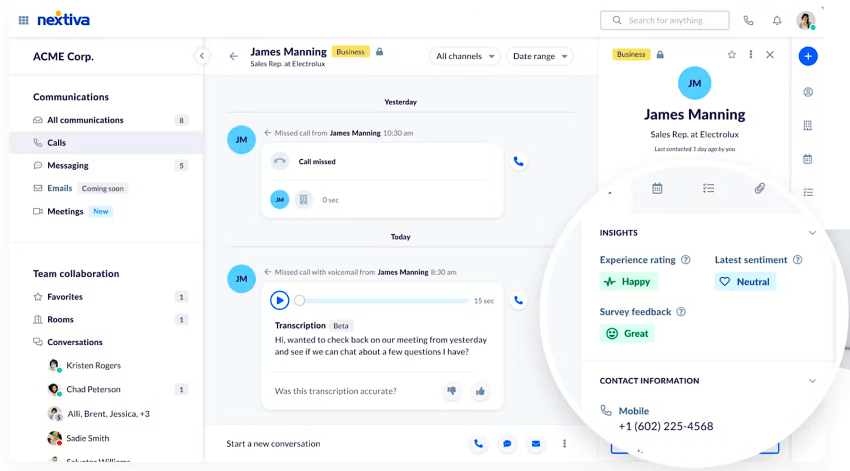
How To Implement a Voice of the Customer Program
You need a structured process to act on the collected customer insights and feedback. Follow these five steps to create a successful VoC program.
1) Collect feedback across all channels
First, implement listening posts at key touchpoints in the customer journey. Use a mix of methods — surveys, social listening, support interactions, and reviews — to develop an omnichannel feedback strategy. The goal is to meet customers where they are and make it easier for them to share their opinions.
2) Unify data for easy access
Feedback from different communication channels ends up in data silos, obscuring the bigger picture. Consolidate all your Voice of the Customer data into a central repository, such as a unified customer experience management platform, CRM, data warehouse, or dedicated Voice of the Customer platform. Create a single source of truth for all customer insights.
3) Analyze feedback with AI and NLP
Much of your most valuable feedback is unstructured (e.g., open-ended survey responses, conversation transcripts). Manually analyzing this data isn’t scalable. Use artificial intelligence (AI) and natural language processing (NLP) tools to automatically identify key topics, track sentiment, and spot emerging trends across thousands of customer comments.
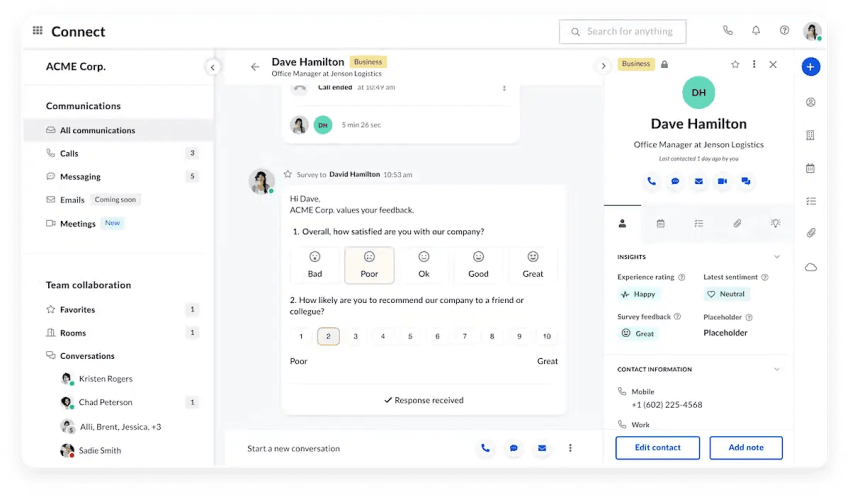
4) Share insights across teams
Voice of the Customer isn’t just relevant for customer support. Create dashboards and reports tailored to different departments. Share product feedback with the R&D team, marketing insights with the marketing team, and service issues with the support team to make the entire organization customer-centric.
5) Take action and close the feedback loop
This is the most important step. Prioritize the most important issues you identified in your analysis and create a clear action plan to address them. Once you’ve made a change — whether it’s fixing a bug or introducing a requested feature — be sure to communicate it to your customers. Close the feedback loop and show that you’re listening.
Best Practices for Running a Successful VoC Program
Here are some best practices you can follow to create and run an efficient VoC program:
- Gain executive buy-in: Ensure leadership buy-in for the program. Executive buy-in helps secure resources, prioritize initiatives based on feedback, and create a customer-centric culture.
- Create clear ownership: Assign a dedicated owner or team to lead the program. A VoC program without clear leadership often fails due to a lack of focus, accountability, and consistent action.
- Integrate VoC data into your CRM: Don’t simply centralize data — integrate feedback directly into your CRM. Link survey responses, sentiment ratings, and key quotes to individual customer profiles for your sales and support teams to get a 360-degree view of every interaction.
- Set SMART goals for the program itself: Define what success for your Voice of the Customer program looks like. Set specific, measurable, achievable, relevant, and time-bound goals, such as “Increase our Net Promoter Score by 5 points in the next six months” or “Reduce billing-related customer support tickets by 15% this quarter.”
- Connect qualitative and quantitative data: Connect the “what” with the “why.” Use quantitative data (like star ratings and website analytics) to spot trends and identify problem areas. Then, use qualitative data (like open comments and call logs) to understand the human story and context behind the numbers.
- Start small and scale smartly: You don’t need to monitor every channel from day one. Start with the feedback source that will have the greatest impact, like post-support surveys or online reviews. Master collecting, analyzing, and responding to this feedback before expanding your program to other channels.
The Best Voice of the Customer Tools
You need the right tools to run your VoC program. Below is a quick comparison of popular Voice of the Customer tools that streamline the process.
| Tool | Best for | Key feature | Pricing |
|---|---|---|---|
| Nextiva | Businesses looking for a unified customer experience tool to analyze real-time conversations | Unifying communication data (calls, chats) with CX tools | Advanced reporting starts at $25/user/month |
| Qualtrics | Enterprise-wide Experience Management (XM) | Predictive analytics & deep journey mapping | Contact sales |
| Medallia | Large B2C companies focused on operational CX | Real-time alerts and operational integration | Contact sales |
| Sprinklr | Enterprises with a strong focus on social media | Unified analysis of unstructured social data | Contact sales |
| GetFeedback | Mid-market businesses using Salesforce | Deep, native Salesforce integration | Contact sales |
| Thematic | Teams needing to analyze text feedback | AI-powered thematic analysis of comments | Contact sales |
| SurveyMonkey | SMBs and teams needing quick, simple surveys | User-friendly survey creation and distribution | Advanced reporting starts at $39/month |
Voice-of-the-Customer platforms meet different needs. Some support global businesses that require advanced analytics and predictive modeling. Others focus on ease of use and quick setup for smaller teams.
VoC tools fall into two main categories:
Mid-market and SMB options
These options give smaller teams the essentials without the overhead. They focus on ease of use, feedback collection, clear reporting, and quick integrations with CRMs, help desks, and communication platforms. Businesses can start acting on customer feedback faster, without dealing with enterprise-level complexity.
Mid-market and SMB options are best for small to mid-sized businesses and growing companies that want actionable insights at a manageable cost.
- Nextiva: Nextiva tracks customer surveys, contact center analytics, reviews, customer feedback, and customer interaction in one platform. Teams can monitor NPS scores, analyze calls and chats, and spot trends in real-time. Its intuitive interface lets businesses act on feedback quickly without depending on dedicated data analysts.
- GetFeedback (by SurveyMonkey): GetFeedback collects structured feedback through email surveys, website forms, and in-app prompts. It integrates with CRMs like Salesforce, letting teams link feedback directly to customer records. Analytics dashboards highlight trends clearly and help teams work on improvements fast.
- Thematic: Thematic analyzes text feedback automatically, identifying themes, sentiment, and recurring issues across surveys, reviews, and support interactions. Teams understand what is more important to customers without manually reading each response, which turns insights into immediate action.
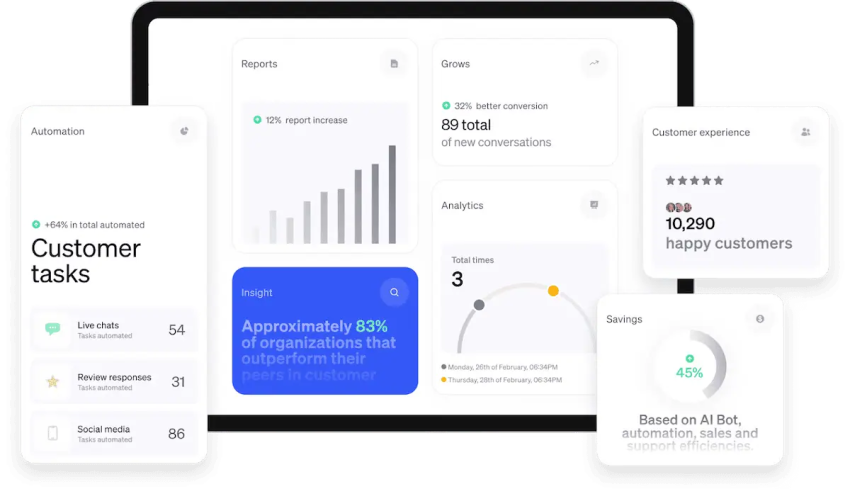
Enterprise VoC Platforms
Enterprise platforms handle large volumes of feedback, provide advanced KPIs, and offer AI-driven predictions and insights. They allow extensive customization and advanced reporting but require time, expertise, and a larger budget.
They offer custom dashboards, complex integrations, and detailed segmentation. These platforms deliver powerful features and are best for large corporations with dedicated CX teams that need deep insights and wide-scale reporting.
- Qualtrics: Qualtrics is a CX software that collects feedback from surveys, social media, and contact center interactions. Its AI-driven analytics detect trends and predict customer behavior. Companies use Qualtrics to segment audiences, create dashboards, optimize customer strategy, and measure the impact of experience improvements on customer lifetime value.
- Medallia: Medallia helps gather data from surveys, calls, chats, and social channels and converts it into actionable insights. Real-time analytics and AI alerts flag urgent issues. Teams track customer sentiments across the entire journey and make informed decisions to improve loyalty.
- Sprinklr: Sprinklr monitors social and digital feedback, combining social listening, review management, and messaging analytics. It helps global brands track conversations, uncover trends, and respond quickly. Sprinklr’s dashboards support enterprise-scale reporting and cross-team collaboration.
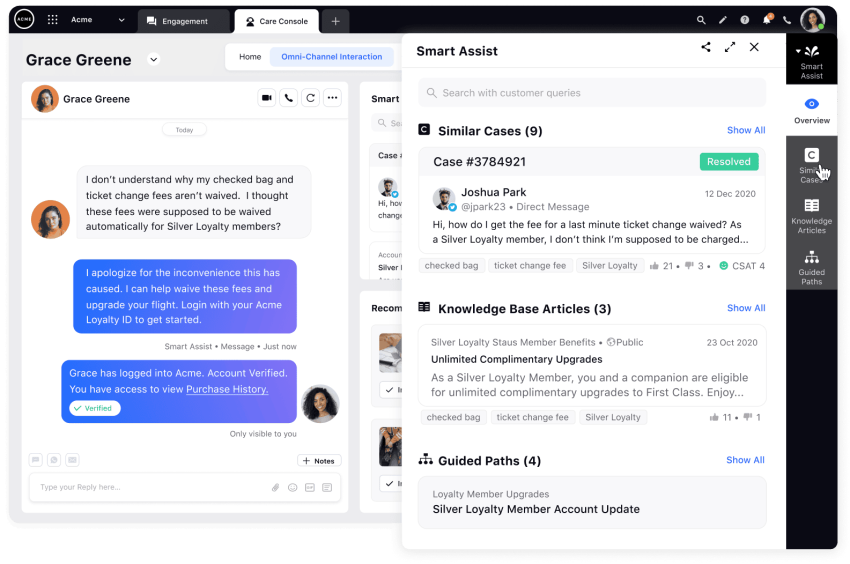
Choosing the Right VoC Platform for Your Business
Choosing a VoC platform depends less on brand name and more on suitability. The right tool will fit your team’s workflow, resources, and goals. Consider these factors to pick a perfect fit:
Budget
Decide how much your team can realistically spend and match it to the analytics you need. Enterprise platforms offer advanced features but require larger investments, while mid-market and SMB options provide essential insights at a lower cost. Focus on tools that deliver value without overspending on unnecessary complexity.
Key data sources
Determine where most of your feedback originates, whether it’s calls, chats, surveys, social media, or website interactions. Choose a tool that integrates smoothly with these channels. Easy integration lets your team collect, consolidate, and analyze feedback, reducing manual work while preventing data gaps.
Team size
Consider who will use the platform. Teams without dedicated analysts benefit from intuitive interfaces and built-in reporting. Platforms that require minimal training help staff act on feedback faster, while complex enterprise systems work best for larger teams with specialized expertise.
Main goal
Clarify your main objective. Are you focusing on running surveys, tracking social media conversations, or analyzing contact center interactions? Pick a tool that excels in your priority area. Aligning the platform to your top goal ensures your team can turn feedback into actionable insights.
Why Nextiva Is Uniquely Positioned for Your Voice of the Customer Program
While many tools specialize in a specific aspect of feedback, Nextiva’s unified communications platform works as a single operational hub for your entire Voice of the Customer program.
Nextiva unifies the most important sources of customer feedback — phone calls, live chats, emails, and social media comments — in one place. You get:
- Integrated omnichannel analytics: Use AI-powered speech and text analytics to automatically transcribe conversations and identify customer sentiment, key themes, and emerging trends from your daily support interactions.
- Unified management: Addresses the biggest challenge: the gap between insight and action. Unify your communication and collaboration tools, analyze and act on feedback within the same platform, instantly follow up with a customer, create a task for another team, and close the feedback loop without switching applications.
Nextiva enables you to not only hear the Voice of the Customer but also respond to it instantly. Create a cycle of listening, analyzing, and acting that leads to real business results today.
Create an amazing CX.
Say goodbye to siloed conversations and hello to a unified customer experience.

















 Customer Experience
Customer Experience 








